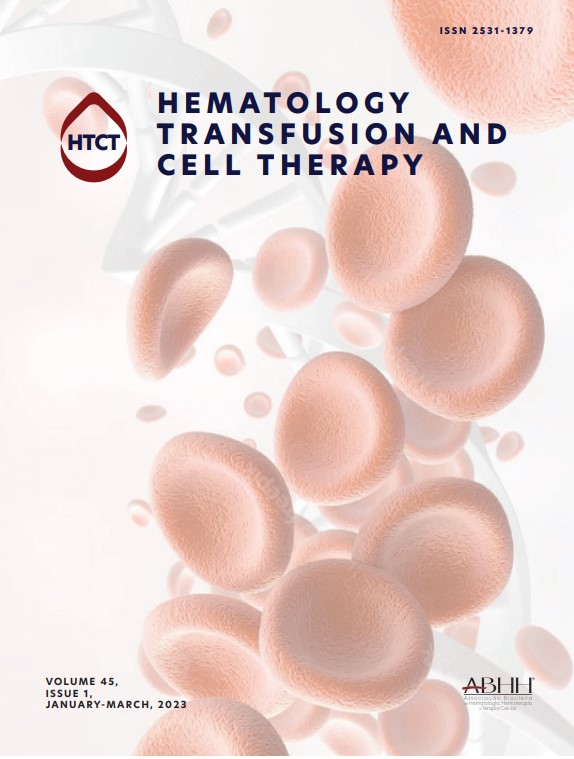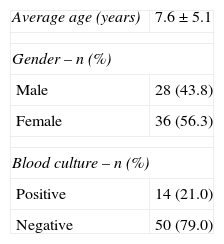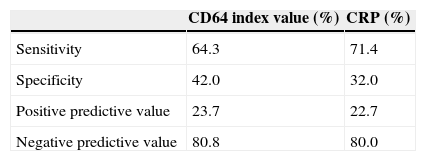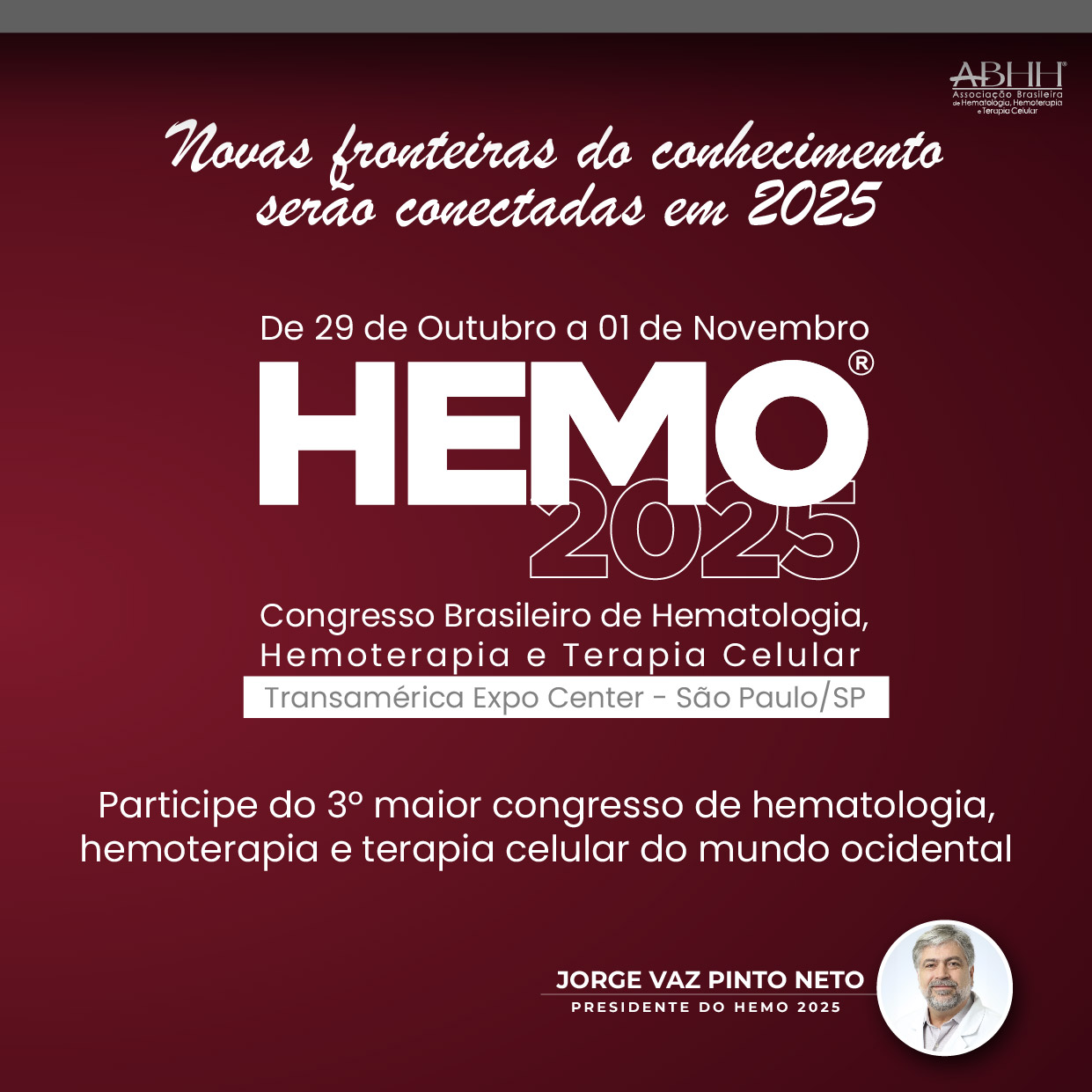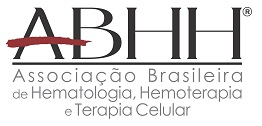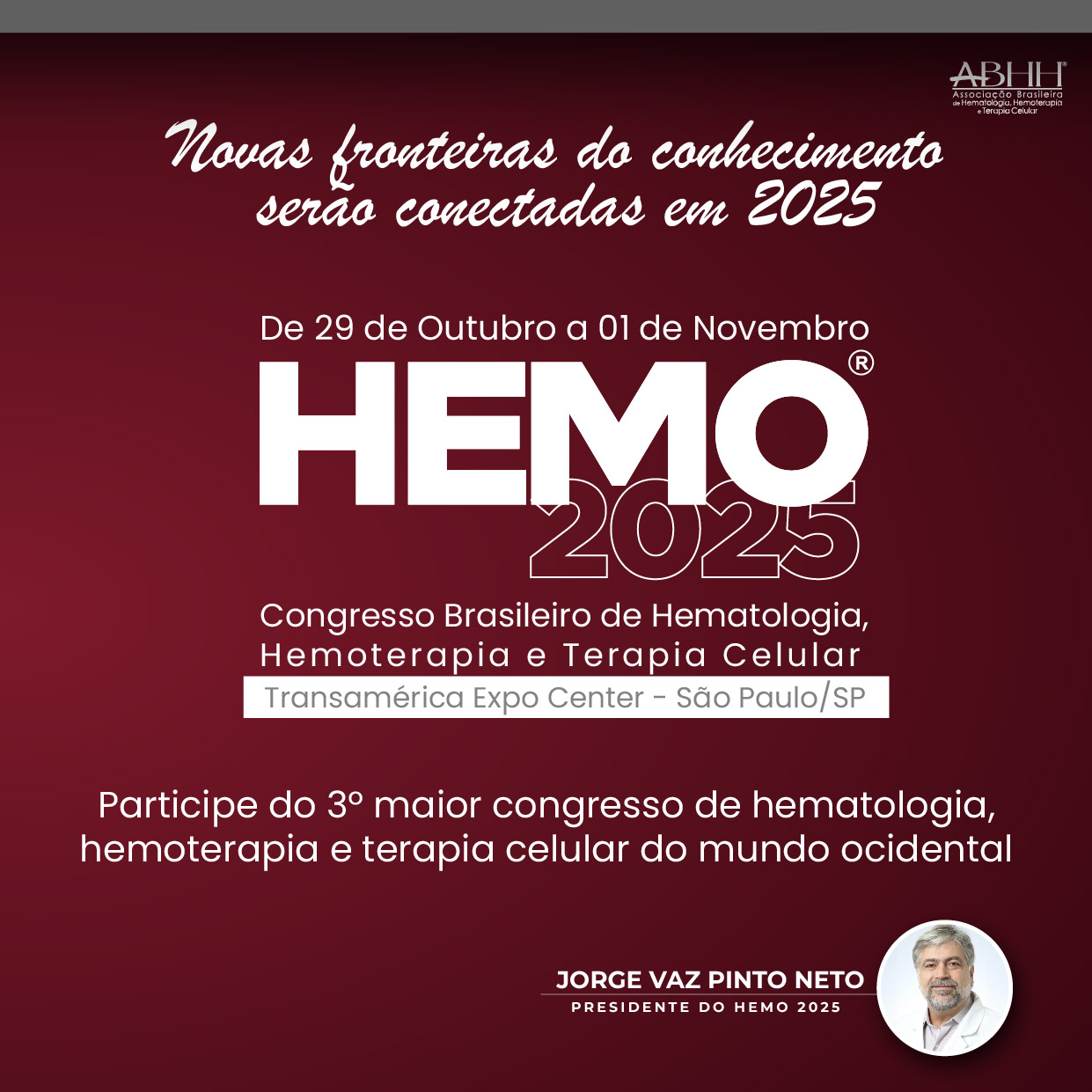Early recognition of infectious processes in neutropenic patients is hampered by the fact that these processes may have dissimilar and non-specific clinical presentations. CD64 is a neutrophil surface marker that is not expressed in non-sensitized neutrophils. When the neutrophil is exposed to tumor necrosis factor-alpha it is activated and is measured via the CD64 index.
MethodsThis paper evaluated the relationship between the index value of CD64 on the first day of febrile neutropenia and a positive blood culture. The correlations with white blood count, C-reactive protein and erythrocyte sedimentation rate were also evaluated. This case–control, prospective, diagnostic study included 64 episodes of neutropenia. Case group (n=14) comprised positive blood cultures, and the control group (n=50), negative blood cultures.
ResultsThe median rates of CD64 were 2.1 (σ±3.9) in the case group and 1.76 (σ±5.02) in the control group. There was no correlation between the value of the CD64 index and blood cultures. The CD64 index was also not correlated with C-reactive protein positivity. Furthermore, the CD64 index was not able to predict blood culture positivity. The sensitivity was 64.3%, the specificity was 42%, the positive predictive value was 23.7% and the negative predictive value was 80%. For C-reactive protein, the sensitivity, specificity, positive predictive value, and negative predictive value were 71.4%, 32%, 22.7%, and 80%, respectively.
ConclusionThe CD64 index is not suitable for predicting the positivity of blood cultures in this specific population of patients with febrile neutropenia.
The treatment of childhood cancer is one of the major success stories of healthcare at the end of the 20th century.1 Nevertheless, one in every 25 children with cancer dies from the complications of treatment, corresponding to one in every six deaths.2,3 Infection frequently manifests as fever and neutropenia, which is known as ‘febrile neutropenia’.4
Some studies have shown that the incidence of septic shock among children with febrile neutropenia and positive cultures is approximately 19% and that cultures are positive in 83% of the patients requiring intensive care.5–7 Early diagnosis of infection allows the immediate onset of antibiotic treatment, with consequent improvement of survival in this patient population.8
According to available evidence, the white cell count is a poor test for distinguishing the infection type in patients with neutropenia. Nevertheless, some studies have reported that an absolute neutrophil count less than 0.1×109/L is an independent predictor of sepsis in severe neutropenic patients.9
C-reactive protein (CRP) and procalcitonin are produced as a part of the inflammatory response. Both proteins are widely used in the clinical practice in the diagnosis and management of patients with sepsis. Because CRP levels increase in the acute phase of inflammation, this protein is widely used to detect active infectious-inflammatory processes, particularly in the pediatric setting.10
The results of CRP testing are controversial, and the sensitivity and specificity of the assay are limited.11–13 Detection of this protein seems to be more useful at the onset of inflammation, particularly within the first 24h, as its sensitivity is higher at this stage compared to that in the late stages of sepsis.14
CD64 is a membrane glycoprotein that mediates endocytosis, phagocytosis, antibody-dependent cellular cytotoxicity, cytokine release, and superoxide production. It is normally expressed on the surfaces of monocytes and macrophages.15
In non-stimulated neutrophils, surface CD64 is expressed in very low amounts. However, its expression increases in infections and/or sepsis as a result of neutrophil stimulation by inflammatory cytokines.16,17 The increase in CD64 expression is proportional to the cytokine stimulus and remains stable for approximately 24h.7
A recent study reported that the antigens expressed on leukocyte surfaces might be used as markers of sepsis in patients admitted to adult and neonatal intensive care units (ICUs), as their sensitivity and specificity are satisfactory.18–20
Technological advances in flow cytometry have allowed the rapid and precise quantification of CD64 expression with a minimal amount of blood (i.e., approximately 0.5mL).
In adults, one study showed that a CD64 index value <1.19 was predictive of negative blood cultures, while a CD64 index value >1.9 was predictive of positive cultures with 94.6% sensitivity and 88.7% specificity and positive and negative predictive values of 89.8% and 94%, respectively.20
The study of early markers of sepsis, such as CD64 is relevant because it allows the earliest possible establishment of treatment and an adjustment of the duration of antibiotic treatment.21
CD64 expression has been little investigated in neutropenic patients. The authors were not able to locate any reference in the literature as to the use of CD64 as a marker in patients with neutropenia, certainly not as concerns children with febrile neutropenia.
The aim of this study was to establish whether CD64 expression in neutrophils, which is a sensitive, rapid and easy-to-measure index, might be useful in children with febrile neutropenia. In addition, this study analyzed the patients’ hematological profiles to investigate the behavior of CRP levels relative to the blood culture results.
MethodsA prospective, diagnostic, case–control study was performed of under 18-year-old children admitted to the Pediatric Hematology Services of the Hospital de Clínicas de Porto Alegre (HCPA) and Hospital da Criança Santo Antônio (HCSA) from May 2011 to June 2014.
Seventy-one episodes of febrile neutropenia in patients undergoing chemotherapy were selected independently from the type of underlying oncological–hematological diseases that required antibiotic treatment during the study period with 63 episodes being eligible for inclusion in this study. All the patients and/or their guardians signed informed consent forms and the study was approved by the institutions’ Ethics Committee (# 100559).
Suspected infection was defined as one episode of fever >38.3°C or two episodes of fever of 38.0°C within 24h in neutropenic patients subjected to empirical antibiotic treatment for sepsis. The group of cases included patients with confirmed diagnosis of sepsis, which was defined as positive blood culture results.
The group of patients without sepsis included children with suspected infection but negative blood culture results. Single episodes of febrile neutropenia were considered; thus, the same patient may have been included more than once. Two blood samples for cultures (one from a peripheral vein and one from a catheter) were obtained at arrival in the Emergency Room or during hospitalization at the time of the diagnosis of febrile neutropenia. In addition to CD64 expression and blood cultures, the white cell count, erythrocyte sedimentation rate (ESR) and CRP were assessed. The under 18-year-old patients were included in this study if they had neutropenia (absolute neutrophil count <0.5×109/L or 0.5–1.0×109/L that decreased to <0.5×109/L during an episode of fever in patients undergoing chemotherapy) associated with one episode of fever >38.3°C or two episodes of fever of 38.0°C within 24h. Patients undergoing chemotherapy and with fever but with absolute neutrophil counts >1.0×109/L, those with blood cultures positive for fungi, and those who refused to participate in the study were not included. The samples were also compared regarding outcome. A poor outcome was defined as death or admission into the ICU because of sepsis.
Peripheral blood samples (0.5mL) were collected following the first episode of fever at the time of culture sample collection. The CD64 expression was measured by means of quantitative flow cytometry using a FACSCalibur device (Becton Dickinson, NY, USA) and a Leuko64 kit (Trillium Diagnostics, LLC, ME, USA).
Descriptive data, such as age and gender, were summarized as means and simple frequencies. A receiver operating characteristic (ROC) curve was used to analyze the potential capacity of the CD64 index to predict positive blood culture results. Correlation of the CD64 index with the white cell count, ERS and CRP and outcome was assessed using the Mann–Whitney test. All the analyses were performed using the Statistical Package for the Social Sciences (SPSS) version 22.0 (IBM Corp., Armonk, NY). The significance level was set at a p-value <0.05.
The sample size was calculated based on data available in the literature.20 In order to detect a two-fold increase in CD64 levels, a 90% power and a significance level of 0.05 were considered. The cut-off levels of CD64 index were 1.19 in the negative culture group and 2.38 in the positive culture group. Thus, 40 episodes of neutropenia were required (32 negative cultures and eight positive cultures). The Windows version of the PEPI suite of programs for epidemiologists, WINPEPI (version 3.2.2) was used to determine sample size.22
Sample preparation and CD64 quantificationThe neutrophil population was analyzed in a FACSCalibur® flow cytometer (BD Biosciences, San Jose, CA, USA) using a Leuko64™ kit (Trillium Diagnostics, Brewer, ME, USA), which performs quantitative immunotyping by flow cytometry based on an antigen–antibody (Ag–Ab) reaction with fluorescent beads. The kit consists of three monoclonal antibodies, two specific to CD64 (both conjugated with fluorescein isothiocyanate – FITC) and one specific for CD163 (clone Mac2-158, conjugated with phycoerythrin – PE), a concentrated lysing reagent, and fluorescent suspension beads, which are used to calibrate and standardize the device for CD64 and CD163 expression in human blood leukocytes.
The samples were prepared following the kit manufacturer's instructions. To improve the test quality and concentrate the cells, leukocyte concentration (Buffy coat) was performed.23
The samples were prepared as follows: 50μL of blood (after being submitted to leukocyte concentration – Buffy coat) was incubated at room temperature in the dark for 15min with 50μL of reagent A (the mixture of the monoclonal anti-CD64 FITC antibodies and the monoclonal anti-CD163 PE antibody). Next, 1.0mL of Trillium Lyse solution was added, followed by incubation at room temperature in a dark chamber for 15min. Then, 5.0μL of reagent C (Leuko64® beads) was added, and 100,000 events were acquired within 24h via flow cytometry.
Lymphocytes were used as the internal negative control (CD64<1.0) and monocytes as the internal positive control (CD64>1.0). The sample results (polymorphonuclear neutrophils – CD64 PMNs) were considered reliable only when the values corresponding to the internal positive and negative controls were within the expected ranges.
ResultsSeventy-one episodes of neutropenia were analyzed. Four were excluded because the blood cultures tested positive for fungi and three because they were not analyzed within the established time limit. Therefore, 64 events met the inclusion criteria and were eligible for this study.
The average age of the participants was 7.6 years old (standard deviation: 5.1 years). The distribution of the sample per gender was balanced: 28 episodes (43.8%) occurred in boys and 36 (56.3%) in girls (Table 1). Thirteen of the 64 analyzed episodes corresponded to children with two or more episodes of neutropenia; they were considered as separate events and were included as such in the analysis. Among the 64 included events, 14 episodes had positive blood culture results, and 50 had negative results.
The median CD64 index value in the positive culture group was 2.71 (interquartile range: 1.87) and the median CD64 index value in the negative culture group was 1.76 (interquartile range: 2.9).
Regarding the underlying neoplastic diseases of the patients with neutropenia, 45 episodes corresponded to children with hematological neoplasms and 19 to children with solid tumors. In the group with hematological diseases, nine episodes were associated with positive blood cultures and 36 with negative cultures and in the group with solid tumors, the blood cultures were positive in five patients and negative in 14 patients. The mean neutrophil count was 1.73×109/L (σ±1.80×109/L) and the mean total leukocyte count was 2.46×109/L (σ±5.79×109/μL).
Regarding the blood cultures, coagulase-negative Staphylococcus was isolated in three episodes (all patients had clinical signs of infection), Escherichia coli in two, Pseudomonas aeruginosa in two, Klebsiella pneumoniae in two, Enterobacter cloacae in one, Haemophilus sp. in one, Streptococcus dysgalactiae in one, Streptococcus hominis in one and Ralstonia mannitolilytica in one.
Analysis of the ROC curve revealed that the CD64 index crossed the negative and the positive fields at least once, indicating that the curve was not able to predict the blood culture results [area under the curve (AUC): 0.491]. This also happened with the CRP (AUC: 0.529), leukocyte count (AUC: 0.535) and neutrophil count (AUC: 0.548).
The CD64 index was categorized as either positive (>1.19) or negative (<1.19).20 The following are the test efficacy measures: sensitivity 64.3%, specificity 42%, positive predictive value 23.7% and negative predictive value 80% (Table 2).
Based on the laboratory reference values, CRP was categorized as positive (>4mg/L) or negative (<4mg/L). The following are the test efficacy measures: sensitivity 71.4%, specificity 32%, positive predictive value 22.7% and negative predictive value 80% (Table 2).
The significance (p-value) of the two-tailed test assessing the correlation between CD64 expression and blood culture results, categorized CRP, ESR, and outcome were 0.20, 0.53, 0.15, and 0.49, respectively. These results indicate a lack of correlation between CD64 expression and the variables. The result of the two-tailed test to assess the correlation between outcome and categorized CRP was 0.06. Regarding the correlation between blood culture results and CRP, a statistically significant difference was not found between the groups.
DiscussionFebrile neutropenia is a risk factor for septic shock; it is usually associated with few patent clinical manifestations at its onset. Thus, all efforts to identify positive blood culture results as early as possible are of extreme importance. Upon exposure to pathogens, neutrophils are activated; the identification of this state by optical microscopy occurs only at later stages through the visualization of toxic granulation.
Analysis of surface marker expression by means of flow cytometry allows earlier detection of the state of neutrophil activation.24 In recent years, the neutrophil surface receptor CD64 has been the focus of several studies on biomarkers.
In one study that assessed a small number of adults with severe sepsis, the sensitivity of increased CD64 index values was similar to that of procalcitonin, but less specific.25 A recently published prospective study assessed CD64 expression in a neonatal ICU; the study included 700 patients and performed more than 1000 assessments of sepsis. The results indicated low prevalence of sepsis (5%), and most cases were of late sepsis. Increased CD64 expression in neonates exhibited 75% sensitivity and 77% specificity.26
In another study, the ROC AUC demonstrated the capacity of the CD64 index to predict positive culture results with 91.7% sensitivity and 88.9% specificity.27
In the present study, the usefulness of CD64 expression was assessed as a predictor of positive blood culture results. This study also assessed the association of the CD64 index with positive blood culture results, CRP and ESR.
The median CD64 index values were similar in both groups. It was not possible to detect any relationship between the CD64 index value and positive blood culture results or with positive CRP results.
The efficacy measures of the CD64 index (64.3% sensitivity and 42% specificity) were lower than those described in the literature.26 These results disagree with the data reported in the literature20 for patients without neutropenia.
There are no data in the literature as to CD64 expression in neutropenic populations. The CD64 index was not adequate to assess infection in the population with febrile neutropenia analyzed in the present study.
In this study, no relationship between the CD64 index value and positive blood culture results was detected. Moreover, the CD64 index did not exhibit a correlation with positive CRP results. Therefore, this study does not support data published for patients without neutropenia; the CD64 index was not able to predict positive blood culture results in this specific population of patients with febrile neutropenia.
The CRP values did not exhibit any statistically significant differences between the groups with or without positive blood culture results. This finding indicates that the elevation of CRP alone is not indicative of positive blood culture results in patients with neutropenia. This result agrees with previously published data.11
However, the result of the two-tailed test to assess the correlation between poor outcome and categorized CRP was 0.06. Although not statistically significant, this value indicates a strong trend toward significance.
Thus, further studies are needed to establish whether there is a relationship between positive CPR and a poor outcome and the efficacy of CD64 expression to predict positive blood culture results in patients with febrile neutropenia. Furthermore, it is important to assess the usefulness of CD64 as a test capable of identifying a high-risk group among patients with febrile neutropenia, in order to achieve an early diagnosis and to manage these patients.
Conflicts of interestThe authors declare no conflicts of interest.

